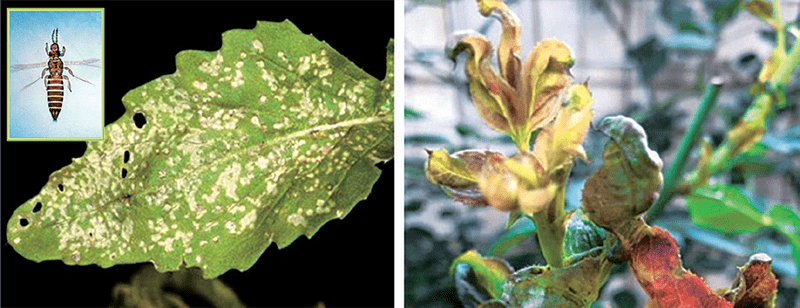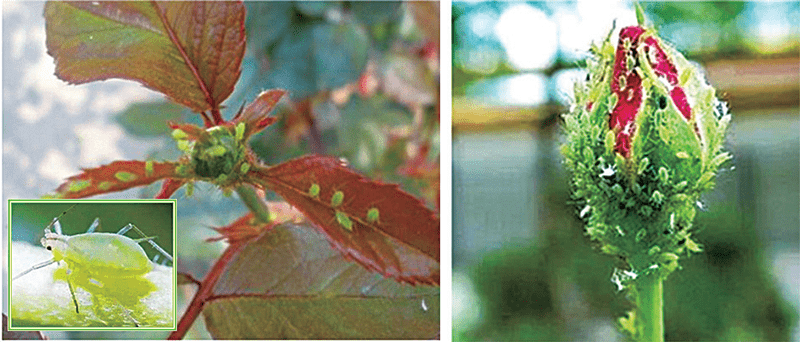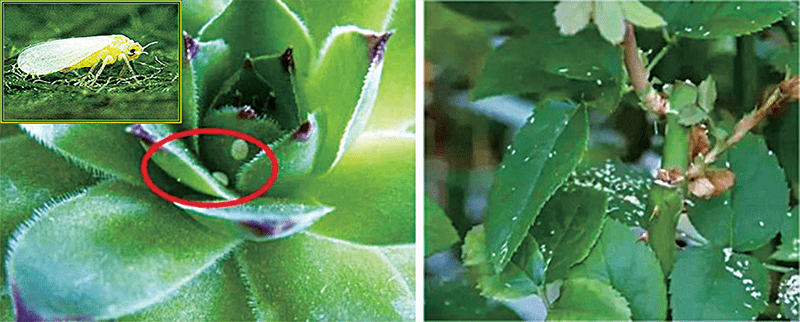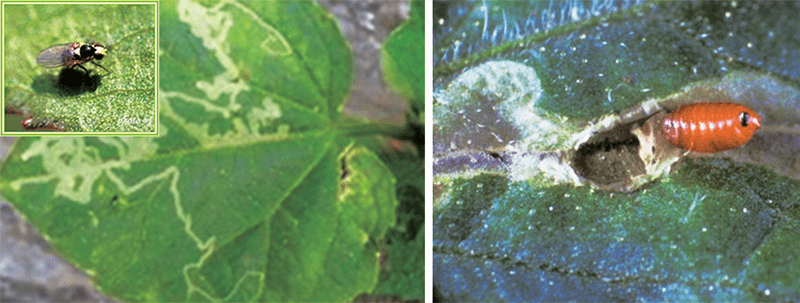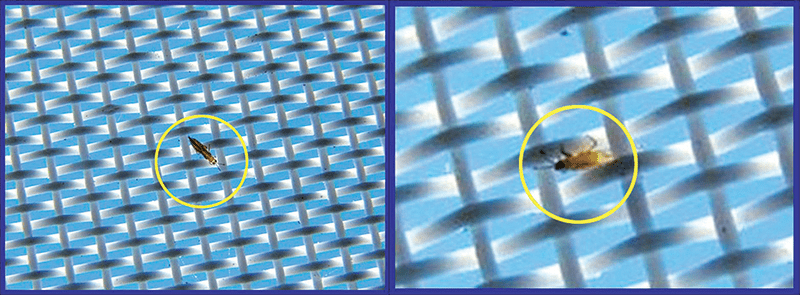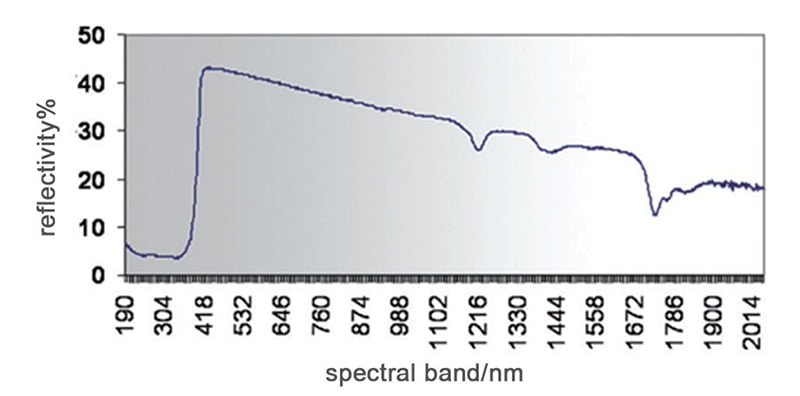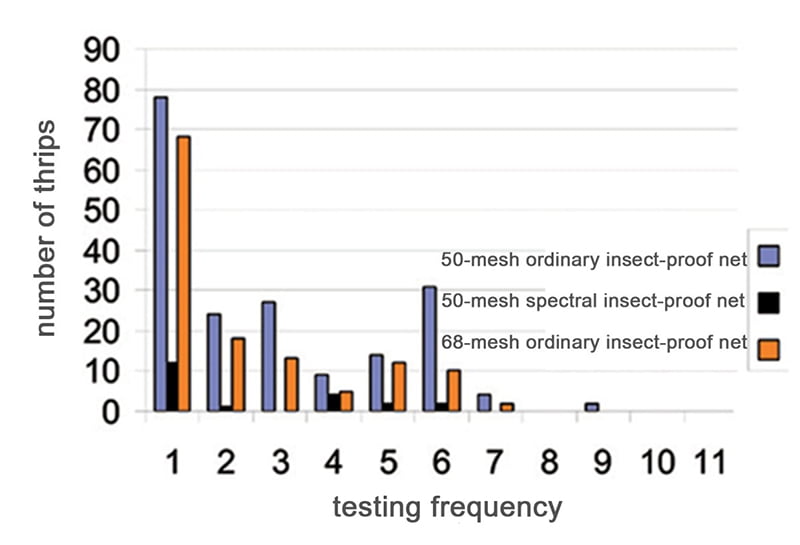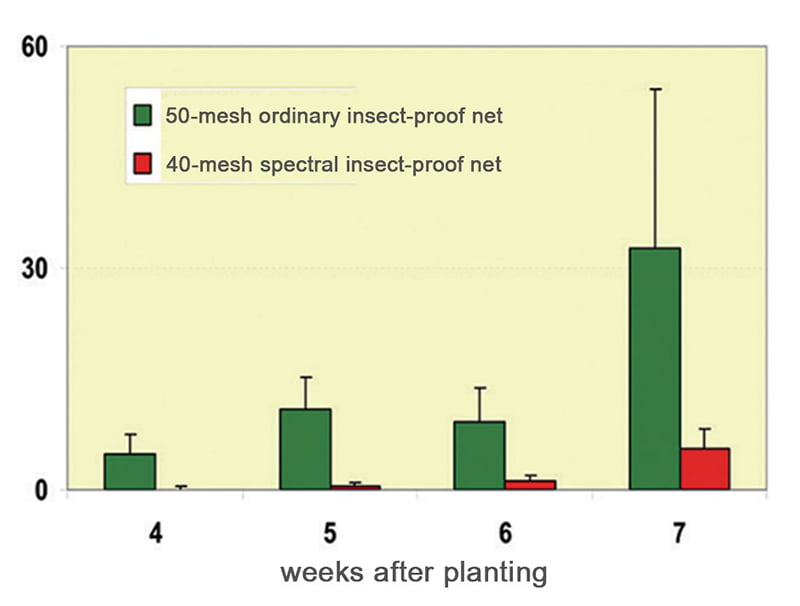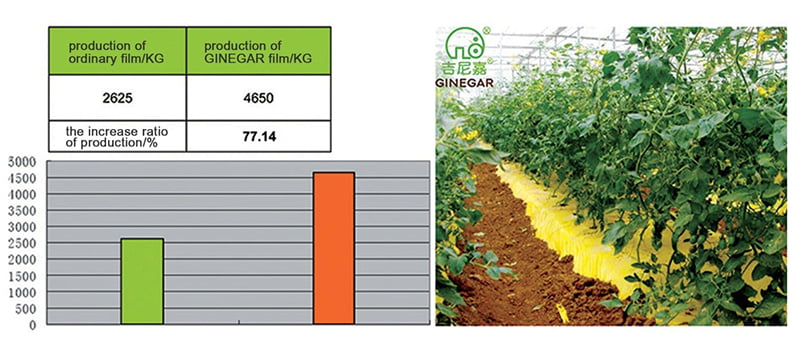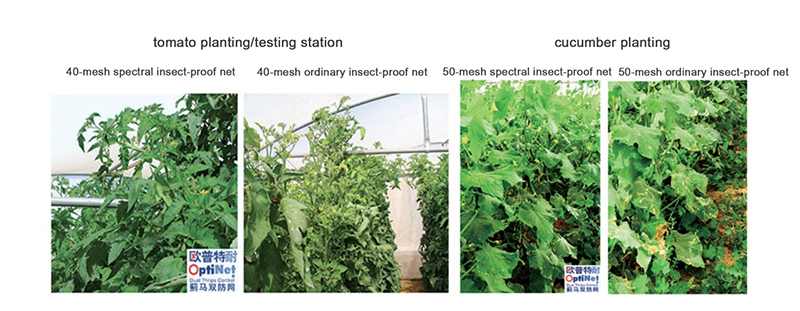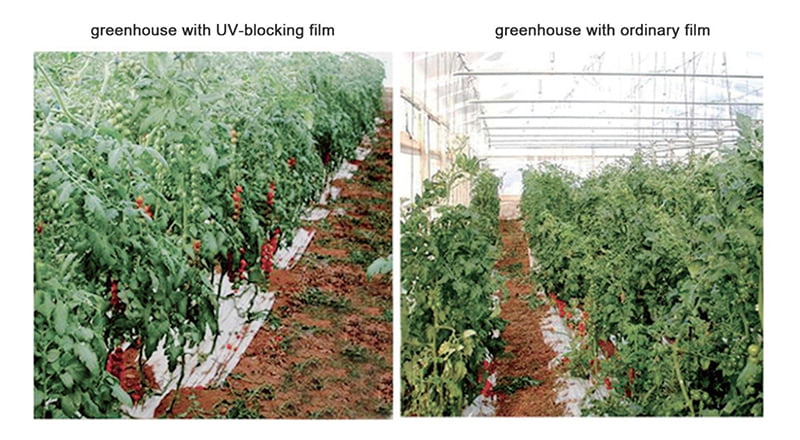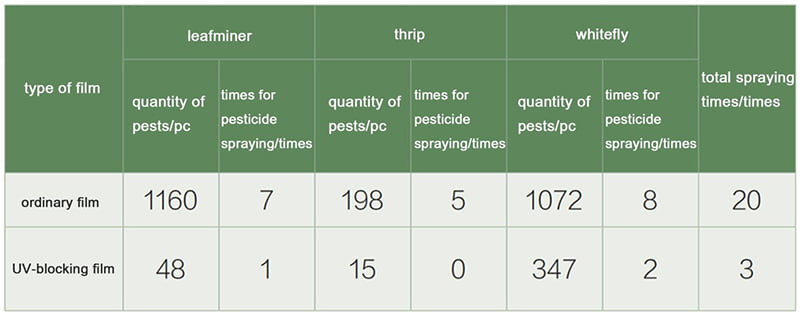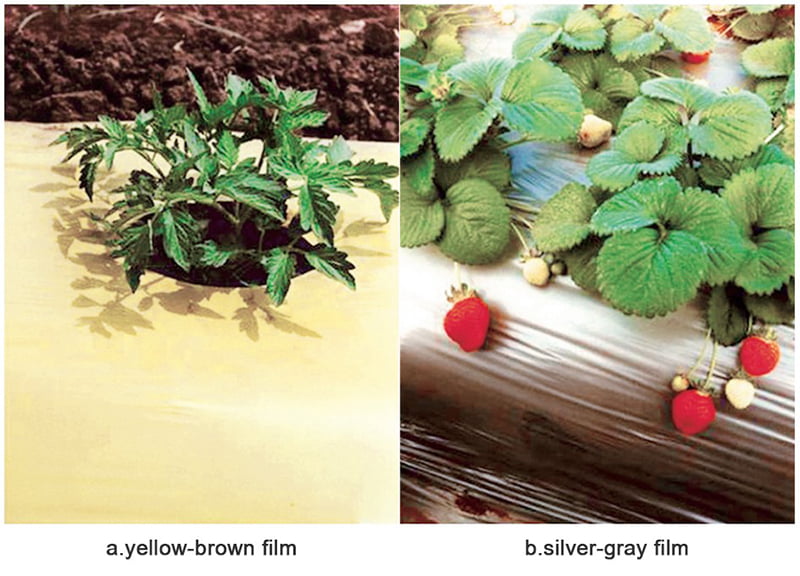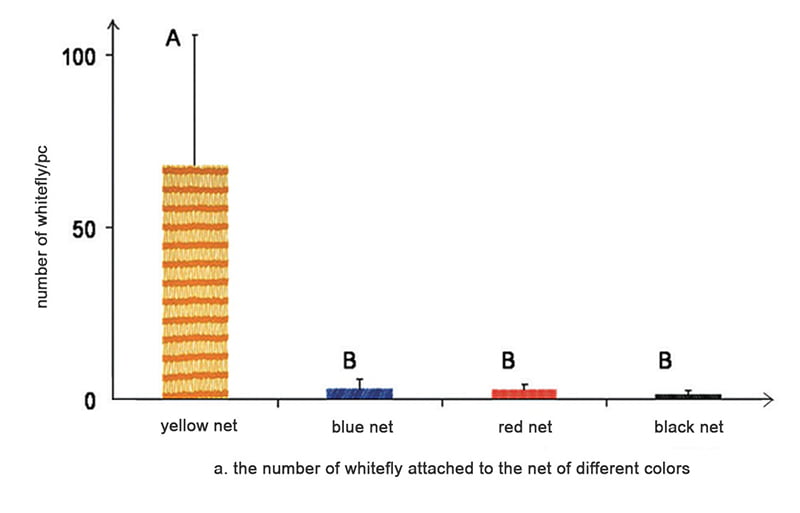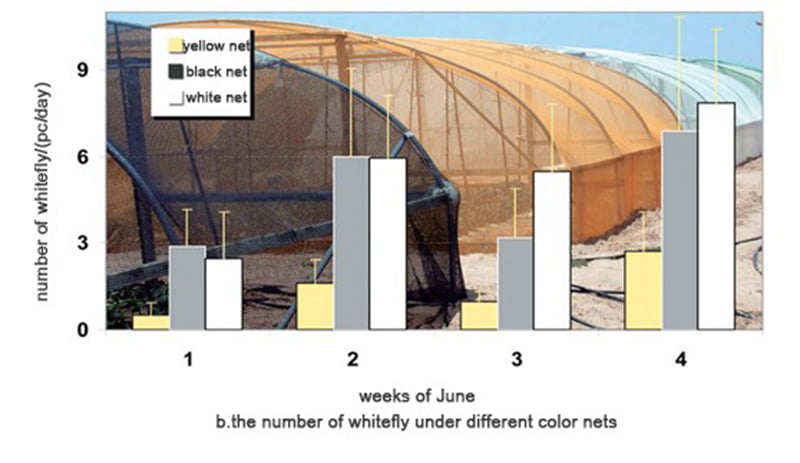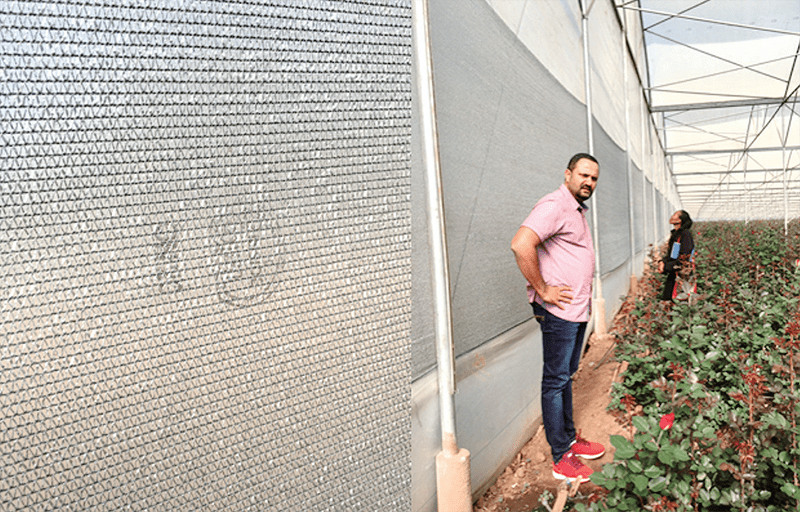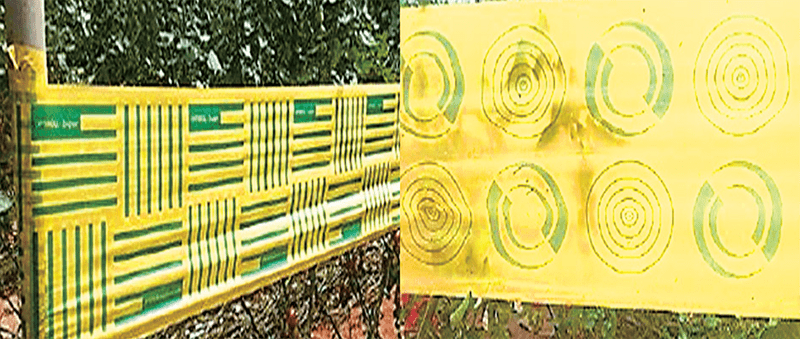Original Zhang Zhiping Greenhouse Horticulture Agricultural Engineering Technology 2022-08-26 17:20 Posted in Beijing
China has formulated a plan for green prevention and control and zero-growth of pesticides, and new technologies using insect phototaxis to control agricultural pests have been widely promoted and applied.
Principles of spectral pest control technology
The control of pests by spectroscopic techniques is based on the physiological characteristics of a class of insects. Most insects have a common visible wavelength range, one part is concentrated in the invisible UVA band, and the other part is in the visible light part. In the invisible part, because it is outside the range of visible light and photosynthesis, it means that the research intervention in this part of the band will not have any impact on work and plant photosynthesis. The researchers found that by blocking this part of the band, it can create blind spots for insects, reduce their activity, protect crops from pests and reduce virus transmission. In this part of the visible light band, it is possible to strengthen this part of the band in the area far away from the crops to interfere with the direction of action of the insects to protect the crops from being infested.
Common pests in the facility
Common pests in planting facility include thrips, aphids, whiteflies, and leafminers, etc.
thrips infestation
aphid infestation
whitefly infestation
leafminer infestation
Solutions for spectral control of facility pests and diseases
The study found that the above-mentioned insects have common living habits. The activities, flight and food search of these insects rely on spectral navigation in a certain band, such as aphids and whiteflies in ultraviolet light (wavelength about 360 nm) and green to yellow light (520~540 nm) have receiver organs. Intervening with these two bands interferes with the activity of the insect and reduces its reproduction rate. The thrips also have visible sensitivity in the visible light part of the 400-500 nm band.
Partially colored light can induce insects to land, thus creating favorable conditions for attracting and capturing insects. In addition, a higher degree of solar reflectance (over 25% of light radiation) can also prevent the insects from attaching optical properties. Such as intensity, wavelength and color contrast, also greatly affect the degree of insect response. Some insects have two visible spectrums, namely UV and yellow-green light, and some have three visible spectrums, which are UV, blue light and yellow-green light.
visible sensitive light bands of common insect
In addition, harmful insects can be disturbed by their negative phototaxis. By studying the living habits of insects, two solutions for pest control can be adopted. One is to change the greenhouse environment in the obstructable spectral range, so that the spectrum of the active range of insects contained in the greenhouse, such as the ultraviolet light range, is reduced to a very low level, to create “blindness” for the pests in this band; second, for the non-blockable interval, the reflection or scattering of colored light of other receptors in the greenhouse can be increased, thereby disturbing the orientation of the flying and landing of the pests.
UV blocking method
The UV blocking method is by adding UV blocking agents to the greenhouse film and insect net, to effectively block the main wavelength bands that are sensitive to insects in the light entering the greenhouse. Thereby inhibiting the activity of insects, reducing the reproduction of pests and reducing transmission of pests and diseases among crops in the greenhouse.
Spectrum insect net
A 50-mesh (high mesh density) insect-proof net cannot stop pests just by the size of the mesh. On the contrary, the mesh is enlarged and the ventilation is good, but the pests cannot be controlled.
the protection effect of high-density insect net
Spectral insect nets block the sensitive light bands of pests by adding additives for anti-ultraviolet bands to the raw materials. Because it is not only relying on the mesh density to control pests, it is also possible to use a lower mesh insect control net to achieve a better insect control effect. That is, while ensuring good ventilation, it also achieves efficient insect control. Therefore, the contradiction between ventilation and insect control in planting facility is also solved, and both functional requirements can be met and a relative balance has been achieved.
From the reflectance of the spectral band under the 50-mesh spectral insect control net, it can be seen that the UV band (the light sensitive band of pests) is greatly absorbed, and the reflectance is less than 10%. In the area of greenhouse ventilation windows equipped with such spectral insect nets, insect vision is almost imperceptible in this band.
reflection map of spectral insect net’s spectral band (50 mesh)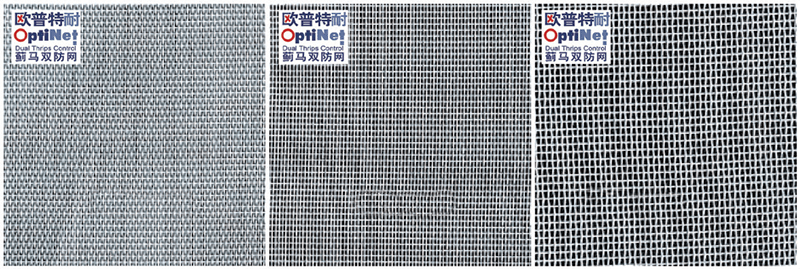
insect nets with different spectrums
In order to verify the protective performance of the spectral insect-proof net, the researchers conducted relevant tests, that is, in the tomato production garden, 50 -mesh ordinary insect-proof net, 50-mesh spectral insect-proof net, 40-mesh ordinary insect -proof net, and 40-mesh spectral insect-proof net were selected. Insect nets with different performances and different mesh densities were used to compare the survival rates of whiteflies and thrips. In each count, the number of whiteflies under the 50-mesh spectrum insect control net was the least, and the number of whiteflies under the 40-mesh ordinary net was the largest. It can be clearly seen that under the same mesh number of insect-proof nets, the number of whiteflies under the spectral insect-proof net is significantly less than that under the ordinary net. Under the same mesh number, the number of thrips under the spectral insect-proof net is less than that under the ordinary insect-proof net, and even the number of thrips under the 40-mesh spectral insect-proof net is less than that under the 50-mesh ordinary insect-proof net. In general, the spectral insect-proof net can still have a stronger insect-proof effect than the high-mesh ordinary insect-proof net while ensuring better ventilation.
the protective effect of different mesh spectrum insect-proof nets and ordinary insect-proof nets
At the same time, the researchers also conducted another experiment, that is, using 50-mesh ordinary insect-proof nets, 50-mesh spectral insect-proof nets, and 68-mesh ordinary insect-proof nets to compare the number of thrips in the greenhouse for tomato production. As picture 10 showed, the same ordinary insect control net, 68-mesh, because of its high mesh density, the effect of insect-proof net is significantly higher than that of 50-mesh ordinary insect-proof net. But the same 50-mesh low-mesh spectral insect-proof net has fewer thrips than the high-mesh 68-mesh ordinary insect-proof net.
comparison of the number of thrips under different insect nets
In addition, when testing the 50-mesh ordinary insect-proof net and the 40-mesh spectral insect-proof net with two different performances and different mesh densities, when comparing the number of thrips per sticky board in the leek production area, the researchers found that even with lower mesh, the number of spectral nets also have a more excellent insect-proof effect than the higher-mesh ordinary insect-proof nets.
comparison of thrip number under different insect control nets in production
the actual comparison of the insect-proof effect of the same mesh with different performances
Spectral insect repellent film
Ordinary greenhouse covering film will absorb part of the UV light wave, which is also the main reason to accelerate the aging of the film. The additives that block the UVA sensitive band of insects are added to the greenhouse covering film through a unique technology, and under the premise of ensuring that the normal service life of the film is not affected, it is made into a film with insect-proof properties.
effects of UV-blocking film and ordinary film on whitefly, thrips, and aphids populations
With the increase of planting time, it can be seen that the number of pests under the ordinary film is greatly increased than that under the UV blocking film. It should be pointed out that the use of this type of film requires the growers to pay special attention to the entry&exit and ventilation openings when working in the daily greenhouse, otherwise the use effect of the film will be reduced. Due to the effective control of pests by the UV blocking film, the use of pesticides by growers is reduced. In the planting of eustoma in the facility, with UV blocking film, whether it is the number of leafminers, thrips, whiteflies or the amount of pesticides used, is less than that of the ordinary film.
Comparison of the effect of UV blocking film and ordinary film
comparison of pesticide use in greenhouse using UV blocking film & ordinary film
Light-color interference/trapping method
Color tropism is the avoidance characteristic of insect visual organs to different colors. By using the sensitivity of pests to some colored visible spectrum to interfere with the target direction of pests, thereby reducing the harm of pests to crops and reducing the use of pesticides.
Film reflection interference
In the production, the yellow side of the yellow-brown film is facing upward, and pests such as aphids and whiteflies land on the film in large numbers due to phototaxis. At the same time, the surface temperature of the film is extremely high in summer, so that a large number of pests adhering to the surface of the film are killed, thus reducing the damage caused to the crops by such pests disorderly attaching to the crops. Silver-gray film utilizes the negative tropism of aphids, thrips, etc. to color light. Covering cucumber and strawberry planting greenhouse with silver-gray film can effectively reduce the harm of such pests.
using different types of film
practical effect of yellow-brown film in tomato production facility
The reflection interference of colored sunshade net
Covering sunshade nets of different colors above the greenhouse can reduce the harm to crops by using the color light characteristics of pests. The number of whiteflies staying in the yellow net was much higher than that in the red net, the blue net and the black net. The number of whiteflies in the greenhouse covered with the yellow net was significantly less than that in the black net and the white net.
analysis of pest control situation by sunshade nets of different colors
Reflection interference of aluminum foil reflective sunshade net
The aluminum foil reflective net is installed on the side elevation of the greenhouse, and the number of whiteflies is significantly reduced. Compared with the ordinary insect-proof net, the number of thrips was reduced from 17.1 heads/m2 to 4.0 heads/m2.
the use of aluminum foil reflective net
Sticky Board
In production, yellow boards are used to trap and kill aphids and whitefly. In addition, thrips are sensitive to blue and have strong blue-taxis. In production, blue boards can be used to trap and kill thrips, etc., based on the theory of insect color-taxis in design. Among them, the ribbon with bullseye or pattern is more attractive to attract insects.
sticky tape with bullseye or pattern
Citation information
Zhang Zhiping. Application of Spectral Pest Control Technology in Facility [J]. Agricultural Engineering Technology, 42(19): 17-22.
Post time: Sep-01-2022


